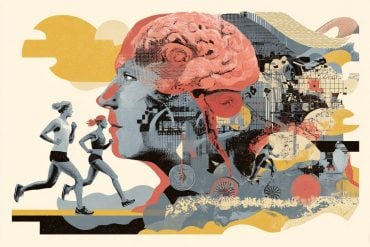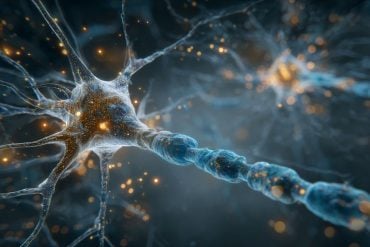Summary: A new adaptive brain modeling framework offers fresh hope for objective diagnosis of neuropsychiatric disorders, which currently lack reliable neuroimaging biomarkers. Using an enhanced version of the Landau-Stuart oscillator model, researchers simulated brain activity to better capture individual-specific neural dynamics.
Applied to fMRI data from individuals with major depressive disorder (MDD) and autism spectrum disorder (ASD), the model achieved superior classification accuracy and identified biologically meaningful regional biomarkers. This breakthrough could help pave the way for more personalized, brain-based diagnostic and treatment approaches.
Key Facts:
- Model Innovation: A novel framework improves simulation of brain dynamics at the individual level using adaptive learning and gradient modulation.
- Diagnostic Accuracy: The model outperformed traditional methods in identifying MDD and ASD, supporting its clinical utility.
- Biomarker Insights: Brain regions such as the thalamus and precuneus emerged as potential diagnostic biomarkers linked to emotional and social impairments.
Source: Research
Neuropsychiatric disorders are highly prevalent worldwide, significantly impairing cognition, emotional regulation, and social functioning. However, their diagnosis still largely relies on subjective evaluations and lacks stable neuroimaging biomarkers.
This study centers on the Landau-Stuart (LS) oscillator model, which simulates BOLD signals by modulating global coupling strength (G) and bifurcation parameters (a) to capture the dynamic evolution of brain regions under varying states of consciousness and pathological conditions.

To improve individual-level adaptability and parameter fitting stability, the research team led by Dr. Junjie Jiang and Dr. Zigang Huang from the School of Life Science and Technology at Xi’an Jiaotong University conducted extensive simulations using synthetic networks and data.
They proposed a novel, generalizable, and adaptive whole-brain dynamic prediction framework. By incorporating personalized initialization strategies, variable learning rates, feature-specific gradient modulation, and an approximate loss function combined with gradient adjustment mechanisms, the model substantially enhanced its ability to reconstruct subject-specific BOLD dynamics.
This approach effectively overcomes the convergence and accuracy limitations inherent in traditional modeling techniques.
Extensive simulations and empirical analyses confirmed that the proposed method delivers robust and generalizable parameter estimation performance across individuals.
The method was further applied to two large-scale real-world fMRI datasets—Major Depressive Disorder (MDD) and Autism Spectrum Disorder (ASD)—enabling precise reconstruction of individual-level brain dynamics.
Results showed that the bifurcation parameters estimated by the proposed model more accurately captured resting-state BOLD features compared to conventional methods.
Furthermore, the approach achieved high classification accuracy in both MDD subtyping and diagnosis, and in distinguishing ASD patients from healthy controls—markedly outperforming traditional functional connectivity-based models.
Subsequent analyses revealed significant regional differences in the hippocampus, supplementary motor area, cingulate cortex, insula, and precuneus between healthy and pathological states.
Notably, bifurcation parameters in the thalamus and parietal cortex were significantly correlated with HAMD and ADOS scores, respectively, suggesting these regions may play key roles in emotional and social dysfunction and hold potential as neurobiological biomarkers.
Looking ahead, future work may focus on refining the model’s theoretical foundations and integrating it with structural connectomics, time-varying modeling, and graph neural network techniques.
Such advancements are expected to enhance its physiological interpretability and predictive capacity, facilitating translation into clinical diagnosis, feedback systems, and personalized neuromodulation strategies.
About this AI and mental health research news
Author: Tian Tian
Source: Research
Contact: Tian Tian – Research
Image: The image is credited to Neuroscience News
Original Research: Open access.
“Adaptive Whole-Brain Dynamics Predictive Method: Relevancy to Mental Disorders” by Junjie Jiang et al. Research
Abstract
Adaptive Whole-Brain Dynamics Predictive Method: Relevancy to Mental Disorders
The Hopf whole-brain model, based on structural connectivity, overcomes limitations of traditional structural or functional connectivity-focused methods by incorporating heterogeneity parameters, quantifying dynamic brain characteristics in healthy and diseased states.
Traditional parameter fitting techniques lack precision, restricting broader use.
To address this, we validated parameter fitting methods using simulated networks and synthetic models, introducing improvements such as individual-specific initialization and optimized gradient descent, which reduced individual data loss.
We also developed an approximate loss function and gradient adjustment mechanism, enhancing parameter fitting accuracy and stability.
Applying this refined method to datasets for major depressive disorder (MDD) and autism spectrum disorder (ASD), we identified differences in brain regions between patients and healthy controls, explaining related anomalies.
This rigorous validation is crucial for clinical application, paving the way for precise neuropathological identification and novel treatments in neuropsychiatric research, demonstrating substantial potential in clinical neurology.






